Product pictures
| Amount Per 2 cups | |||
| Calories | 190 Kcal (795 kJ) | ||
| Calories from fat | 135 Kcal | ||
| % Daily Value* | |||
| Total Fat | 15g | 23% | |
|---|---|---|---|
| Saturated Fat | 3.5g | 18% | |
| Cholesterol | 15mg | 5% | |
| Sodium | 400mg | 17% | |
| Total Carbs | 10g | 3% | |
| Sugars | 1g | 4% | |
| Dietary Fiber | 2g | 8% | |
| Protein | 4g | 8% | |
| Vitamin C | 18.8mg | 31% | |
| Vitamin A | 3.3mg | 110% | |
| Iron | 0.9mg | 5% | |
| Calcium | 100mg | 10% | |
* Percent Daily Values are based on a 2000 calorie diet. Your daily values may be higher or lower depending on your calorie needs.
Find out how many calories should you eat.
Ingredients And Nutrition Overview
Best
choice Good
choice Poor
choice Avoid
it!
choice Good
choice Poor
choice Avoid
it!
-
WeightWatchers Points: 4.7, PointsPlus: 5, SmartPoints: 6
WeightWatchers Points are estimated by carbohydrates, fats, protein and fiber in product. They are not an affirmation of better quality or nutritional value of the product or its manufacturer. Only way to count for dieters. Less points are better.
Read more at Weight watchers diet review -
Over 20% of daily saturated fat!
Bad! More 20% of daily saturated fat!
For years Saturated fat was claimed to raise cholesterol levels and give us heart attacks. Today different studies refute this claim. They say, that replacing saturated fat with carbohydrates or refined starch or sugar is not changing the heart disease risk. Not processed carbs nor saturated fats are good for you. Only if you replace it with polyunsaturated fat, you'll get a reduction in heart disease risk. So try to have a balanced diet. -
Salty! Has over 17% of the daily sodium max
The average American consumes 5,000 mg of sodium daily — twice the recommended amount amount of 2400mg for healthy adults, this is 1 teaspoon of salt.
For medical reasons many people should not exceed 1500mg of sodium.
Surprisingly, you're responsible for only 15% of the sodium in your diet the bigger part - 75% of the sodium that you consume each day comes from processed foods, not home cooking or the salt shaker.
Excess sodium intake increases the risk of high blood pressure, hypernatremia, hypertension, cardiovascular disease and other heart problems.
Are these reasons enough to cut the sodium intake? No doubt! -
Convert Salt tsps to Sodium mg easily
Salt (NaCl) is not excactly sodium (Na).
It is not right to use these terms as synonyms.
The FDA recommended limit of sodium is 2,300 mg per day (or even less - about 1500 mg while one is on low sodium diets).
This is much less than the weight of salt.
(5,750 mg per day or 3,750 mg for low sodium diet) and not so convenient to calculate.
Know how much sodium is in your salt - without a calculator:
1/4 tsp salt = 600 mg sodium
1/2 tsp salt = 1200 mg sodium
3/4 tsp salt = 1800 mg sodium
1 tsp salt = 2300 mg sodium -
Great! Contains less than 1.5 tsp of sugar.
Great! Contains less than 1.5 tsp of sugar per serving!
-
More than 8% daily fiber!
Eat more fiber. You've heard it many times. But why it is so good for your health?
Dietary fiber is best known for its ability to make our digestion going right.
So want to prevent or relieve constipation - eat more fiber!
There are also other great health benefits as well, such as lowering your risk of diabetes, heart disease and cancer, and helping to maintain a healthy weight by helping to feel you full longer.
The best source of fiber are fruits, vegetables, whole grains and legumes and not processed foods with added fiber. -
Naturally high in Vitamin A
You get real, natural easy absorbing Vitamin A from this product, not as an artificial fortified ingredient.
This is great! Let's try to get the best from the real food, because we get too much from artificial ingredients nowdays. -
For dieters: FoodPoints value is 7
* FoodPoints are calculated by Fooducate based on fats, carbs, fiber, and protein. They are not an endorsement or approval of the product or its manufacturer. The fewer points - the better.
-
Controversial additive TBHQ in here
TBHQ (tertiary butylhydroquinone) is an antioxidant used to keep oils from going rancid. It is a petroleum derivative. Yummy. The food industry pushed the FDA for years to get it approved as a preservative despite the fact that ingestion of large doses (a thirtieth of an ounce) can cause nausea, delirium, and ringing of the ears. (Anyone remember what Jack Nicholson had for lunch in “The Shining”?) TBHQ cannot exceed 0.02% of the oil and fat content in a food.
-
Highly Processed!
This product is highly processed. If you'll take a look at its ingredient list, you'll discover new words to add to your vocabulary. Many of theses ingredients are required to increase the shelf life of the product and improve the flavor that disappears when food is not fresh.
-
Contains high fructose corn syrup
High fructose corn syrup (HFCS) is a highly processed ingredient manufactured from surplus corn, and yielding a cheap replacement to table sugar. In the early 1980’s many food manufacturers started using it instead of sugar as a cost cutting measure. That’s about the same time obesity rates started to skyrocket in the US. Most scientists agree that HFCS is no better and no worse than plain sugar, though some newer studies seem to find the two affect the metabolism differently. Consumption of both should be drastically limited. ---- Sources: Bray GA, Nielsen SJ, Popkin BM. Consumption of high-fructose corn syrup in beverages may play a role in the epidemic of obesity. Am J Clin Nutr. 2004;79(4):537-43. Berkey CS, Rockett HR, Field AE, Gillman MW, Colditz GA. Sugar-added beverages and adolescent weight change. Obes Res. 2004;12(5):778-88. Johnson RJ, Segal MS, Sautin Y, Nakagawa T, Feig DI, Kang DH, Gersch MS, Benner S, Sánchez-Lozada LG. Potential role of sugar (fructose) in the epidemic of hypertension, obesity and the metabolic syndrome, diabetes, kidney disease, and cardiovascular disease. Am J Clin Nutr. 2007;86(4):899-906. Schulze MB, Manson JE, Ludwig DS, Colditz GA, Stampfer MJ, Willett WC, Hu FB. Sugar-sweetened beverages, weight gain, and incidence of type 2 diabetes in young and middle-aged women. JAMA. 2004;292(8):927-34. Ludwig DS, Peterson KE, Gortmaker SL. Relation between consumption of sugar-sweetened drinks and childhood obesity: a prospective, observational analysis. Lancet. 2001;357(9255):505-8. James J, Thomas P, Cavan D, Kerr D. Preventing childhood obesity by reducing consumption of carbonated drinks: cluster randomised controlled trial. BMJ. 2004;328(7450):1237.
-
Contains azodicarbonamide. Learn more
Azodicarbonamide is a popular dough conditioner. It also bleaches the flour (makes it whiter). It's considered safe in the US at up to 45 parts per million, but is banned from use in Europe because studies showed it could cause asthma or allergic reactions. ---- Sources: Kim C, Cho J, Leem J, Ryu J, Lee H, Hong Y. Occupational asthma due to azodicarbonamide. Yonsei Med J. 2004; 45-2: 325-329. Normand JC, Grange F, Hernandez C, Ganay A, Davezies P, Bergeret A, Prost G. Occupational asthma after exposure to azodicarbonamide: Report of four cases. Brit J Ind Med. 1989; 46: 60-62. Vlastos D, Moshou H, Epeoglou K. Evaluation of genotoxic effects of semicarbazide on cultured human lymphocytes and rat bone marrow. Food Chem Toxicol. 2010; 48: 209-214. Ye J, Wang X, Sang Y, Liu Q. Assessment of the determination of azodicarbonamide and its decomposition product semicarbazide: Investigation of variation in flour and flour products. J Agr Food Chem. 2011; 59: 9313-9318.
-
No whole grains here
Whole grains are a great source of fiber and other nutrients. Fiber is one of the most important nutrients lacking in the modern American diet. Unfortunately, this product does not contain enough whole grains, if any. If there is fiber in here, it's probably added fiber and not naturally occurring. Whole grains are not the only way to consuming fiber, BUT by choosing them instead of processed grains you've made a smart choice. If you'd like to eat a bit better, try for something that contains whole grains.
-
Natural flavors added. Learn why
Companies add flavorings to make products taste better. They are created in a lab and the formulations are guarded as trade secrets. Flavorings can compensate for flavor loss during processing, substitute for ingredients, lower production costs and increase shelf stability. Natural flavorings are more expensive to source than artificial flavors, but tend to be better received by consumers. People sensitive to MSG, vegans, vegetarians and those with allergies should pay special attention to the phrase "natural flavorings" since glutamates, animal products or allergens may be the source of natural flavors. You can always contact the manufacturer for more information.
-
Learn about corn syrup, found here
Corn syrup is often used as a sweetener in processed food. It is NOT THE SAME as high fructose corn syrup. Don't be fooled when looking up the amount of sugar a product contains if corn syrup is listed as an ingredient. This is because corn syrup contains 50% sugar, and 50% of another form of carbohydrate known as ""oligosaccharides"", which is pretty close to sugar. If a product has less sugar than you think it should, but contains corn syrup in the ingredient list, you'll know that the missing carbs are those oligosaccharides, not much better.
-
Learn about Xanthan Gum, found here
Xanthan gum is an emulsifier. It helps ingredients blend more effectively and stay blended while waiting on a shelf. For example – water and oil mixtures, as well as bits of spice in a salad dressing. Xanthan Gum is made by fermenting corn sugar with a bacteria, Xanthomonas campestris. It’s the same bacteria that creates black spots on broccoli and cauliflower. The result is a slimy goo that is then dried up and ground into a fine white powder.
-
Learn about Maltodextrin, found here
Maltodextrin is a polysaccharide that is used as a food additive. A polysaccharide is a type of carbohydrate. It is produced from starches of corn, wheat, potatoes or rice. Its flavor can be slightly sweet or almost flavorless. Maltodextrin is used as a bulking base for artificial sweeteners, for example in Jell-o it is used in conjunction with Aspartame and Acesulfame Potassium. It is also the bulking agent in Splenda.
-
Contains calcium propionate. Learn more
Calcium propionate (or calcium propaonate) is a preservative that inhibits mold and bacterial growth. Considered safe, but in the early 1990's it was linked to attention deficit disorder in children.
-
What is Sodium Stearoyl Lactylate?
Sodium Stearoyl Lactylate is a chemical similar to lactic acid used in the processing of food. The FDA and consumer organizations have found it safe. We don't think it's dangerous, however, it is an indicator that the product is processed. We like that it's biodegradable, but still . . . it provides no nutritional value and few consumer benefits. When buying food, keep in mind that the presence of Sodium Stearoyl Lactylate means that this item is processed. It makes bread look big and fluffy, icing look light and pillowy, and reduces the amount of fat and sugar needed in baked goods. Sodium Stearoyl Lactylate makes processed food cheaper, more beautiful and gives it a more appealing texture. We recommend avoiding it if because we like food to be processed as little as possible . . .
Allergens
Soy Allergy, Lactose Allergy, Milk Allergy, Eggs Allergy, Fish Allergy, Corn Allergy, Gluten Allergy, Wheat Allergy
Salad caesar Ingredients
Romaine Lettuce, Caesar Dressing (Soybean Oil, Water, Parmesan & Romano Cheese Made from Cow's Milk [Cultured Part-Skim Milk, Salt & Enzymes], Vinegar, Garlic, Egg Yolk, Anchovy Paste [Cured Anchovies, Salt, De-Fatted Soy Flour, Water], Salt, Spices, Pure Olive Oil, Molasses, Corn Syrup, White Wine, Caramel Color, Sugar, Tartaric Acid, Citric Acid, Tamarind, Natural Flavor, Butter Garlic Croutons (Enriched Flour [Wheat Flour, Malted Barley Flour, Niacin, Reduced Iron, Thiamin Mononitrate, Riboflavin, Folic Acid], Canola and/Or Sunflower Oil, High Fructose Corn Syrup, Garlic [Dehydrated], Maltodextrin, 2% Or Less of Natural Flavors [Milk], Salt, Butter Oil, Wheat Gluten, Calcium Propionate [Preservative], Calcium Peroxide, Calcium Sulfate, Ascorbic Acid, Azodicarbonamide, Sodium Stearoyl Lactylate, Extractive of Annatto [Color], Yeast, Alpha Tocopherol [Antioxidant], Citric Acid, Tbhq [to Preserve Freshness]). Parmesan Cheese (Pasteurized Milk, Salt, Cheese Culture, Enzymes, Potato Starch and Powdered Cellulose [to Prevent Caking], Natamycin [A Natural Mold Inhibitor]). Contains: Egg, Fish, Milk, Soy, Wheat.
You Might Also Like
% RDI of Main Nutrition Facts
10%
of RDI* (190 calories) 0 g
-
Cal: 9.5 %
-
Fat: 23.1 %
-
Carb: 3.3 %
-
Prot: 8 %
-
0%25%75%RDI norm*
Calories Breakdown
- Carbs (20.9%)
- Fat (70.7%)
- Protein (8.4%)
Get Your Recipe of Health!
Follow RecipeOfHealth on Facebook!

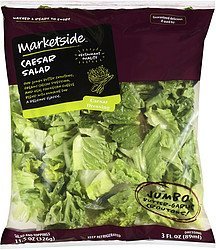
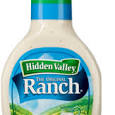
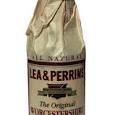
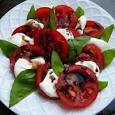
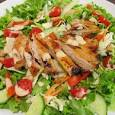
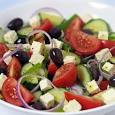
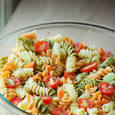
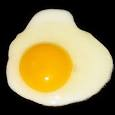
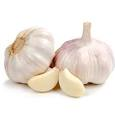
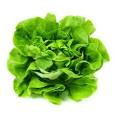
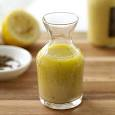
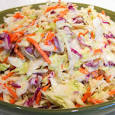
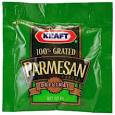
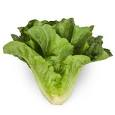
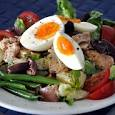
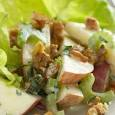
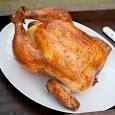









Add your comment